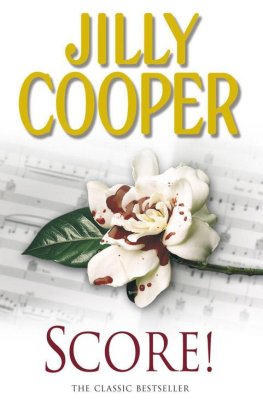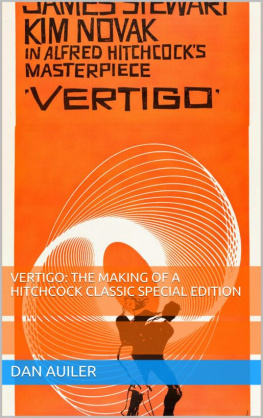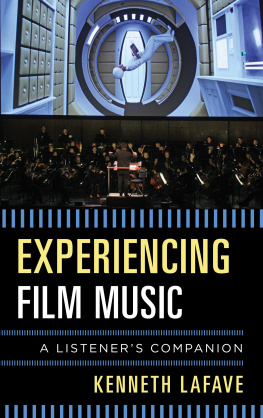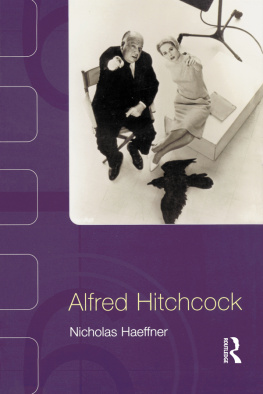Bernard Herrmanns The
Ghost and Mrs. Muir
A Film Score Guide
David Cooper
Scarecrow Film Score Guides, No. 5

SCARECROW PRESS, INC.
Published in the United States of America
by Scarecrow Press, Inc.
A wholly owned subsidiary of
The Rowman & Littlefield Publishing Group, Inc.
4501 Forbes Boulevard, Suite 200, Lanham, Maryland 20706
www.scarecrowpress.com
PO Box 317
Oxford
OX2 9RU, UK
Copyright 2005 by David Cooper
All rights reserved. No part of this publication may be reproduced, stored in a retrieval system, or transmitted in any form or by any means, electronic, mechanical, photocopying, recording, or otherwise, without the prior permission of the publisher.
British Library Cataloguing in Publication Information Available
Library of Congress Cataloging-in-Publication Data
Cooper, David.
Bernard Herrmanns The ghost and Mrs. Muir : a film score guide / David
Cooper.
p. cm. (Scarecrow film score guides ; no. 5)
Includes bibliographical references and index.
ISBN 0-8108-5679-4 (pbk. : alk. paper) ISBN 978-0-8108-5679-0
1. Herrmann, Bernard, 19111975. Ghost and Mrs. Muir. I. Title. II. Series.
ML410.H562C64 2005
781.542dc22
2005007726
 The paper used in this publication meets the minimum requirements of American National Standard for Information SciencesPermanence of Paper for Printed Library Materials, ANSI/NISO Z39.48-1992.
The paper used in this publication meets the minimum requirements of American National Standard for Information SciencesPermanence of Paper for Printed Library Materials, ANSI/NISO Z39.48-1992.
Manufactured in the United States of America.
In loving memory of my father
JOE COOPER (1925-2005).
Vicit Agnus noster: Eum sequamur.
Contents
Kate Daubney
Illustrations
Examples
Tables
Figure
Abbreviations
Pitches are notated according to the ASA rather than the Helmholtz system. The following table converts between the two systems:
ASA | Helmholtz |
C1 | CC |
C2 | C |
C3 | c |
C4 (Middle C) | c |
C5 | c |
C6 | c |
C7 | c |
Editors Foreword
The Scarecrow Film Score Guide series of is dedicated to drawing together the variety of analytical practices and ideological approaches in film musicology for the purpose of studying individual scores. Much value has been drawn from case studies of film scoring practice in other film music texts, but these guides offer a substantial, wide-ranging and comprehensive study of a single score. Subjects are chosen for the series on the basis that they have become and are widely recognized as benchmarks for the way in which film music is composed and experienced, or because they represent a significant stage in the compositional development of an individual film composer. A guide explores the context of a scores composition through its place in the career of the composer and its relationship to the techniques of the composer. The context of the score in narrative and production terms is also considered, and readings of the film as a whole are discussed in order to situate the musical analyses which conclude the guide in their filmic context. Furthermore, although these guides focus on the score as written text, bringing forward often previously unknown details about the process of composition as they are manifested in the manuscript, analysis also includes exploration of the music as an aural text, for this is the first and, for most audiences, the only way in which they will experience the music of the film.
This volume on the score for The Ghost and Mrs. Muir has perhaps the curious status of being a prequel to Professor Coopers earlier study of Bernard Herrmanns score for Vertigo.score is indubitably Herrmannesque, yet it sits firmly within a period during which the paradigm of Hollywood scoring techniques and values was being established through the rather different scores of Max Steiner, Erich Korngold and Franz Waxman. The distinctive differences in Herrmanns technical and conceptual approach to scoring films, indeed the very types of films which he scored, remind us that while we might wish to impose homogeneity onto the Golden Age of Hollywood film scoring, this is not appropriate. For example, Professor Cooper reveals the roots of Herrmanns methodology in his compositions for radio. This is an influence on Hollywood film scoring which has been little considered thus far, and one which belies the perception that music in film evolved only from musical theatre and opera.
This volume is an insightful and detailed account of the scores place in the film text, but it is written in such a way that whatever the readers level of musical knowledge or understanding, there is much to be learned and understood about what part the music plays in casting the spells of this largely ignored but delightful film.
Dr. Kate Daubney
Series Editor
Acknowledgments
The Ghost and Mrs. Muir
Composed by Bernard Herrmann
Copyright 1947 EMI Catalogue Partnership, EMI Robbins Catalog Inc,
EMI United Partnership Ltd, USA
Worldwide print rights controlled by Warner Bros. Publications Inc/IMP
Ltd.
Reproduced by permission of International Music Publications Ltd.
All Rights Reserved.
The excerpt from the First Sea Interlude from Benjamin Brittens opera Peter Grimes, copyright 1945 by Boosey & Hawkes Music Publishers Ltd., is reproduced by permission of Boosey & Hawkes Music Publishers Ltd.
Extract from THE HALF BROTHER by Lars Saabye Christensen, translated from the Norwegian by Kenneth Steven. Published in Norway by J. W. Cappelens, 2001. First English edition published by Arcadia Books, 2001. US edition published by Arcade Books, 2003.
I am indebted to a number of people and organizations who have assisted in the preparation of this book. The research was supported by the Arts and Humanities Research Board which awarded me one of its Small Grants in the Creative and Performing Arts. David Seubert, curator of The Bernard Herrmann Archive of the Music Library at the University of California, Santa Barbara, was extremely helpful in gaining access to the score, and Mrs. Norma Herrmann kindly gave her permission for me to have a copy of it for study. Jennifer Insogna and Jovanka Ciares of EMI Music Publishers were very supportive in gaining the publishers permission. Bill Rosar has supplied very many useful comments and insights. My research assistant, Ian Sapiro, has taken on the administrative burden of preparing the copy, and expertly typeset the book, dealing with numerous small problems and issues with great efficiency and enthusiasm. Yo Tomita very kindly adapted his excellent Bach font for me to accommodate a range of time signatures.
I would like to especially thank my series editor, Kate Daubney, for her faith in this project and for her unstinting help and support.
Introduction
The Ghost and Mrs. Muir is not usually featured near the top of league tables of unmissable films. It is a gentle domestic romantic comedy that does not deal with great social, political or intellectual themes, and is very much of its time. Although Philip Dunnes screenplay is literate and intelligent, it is by no means another









 The paper used in this publication meets the minimum requirements of American National Standard for Information SciencesPermanence of Paper for Printed Library Materials, ANSI/NISO Z39.48-1992.
The paper used in this publication meets the minimum requirements of American National Standard for Information SciencesPermanence of Paper for Printed Library Materials, ANSI/NISO Z39.48-1992.